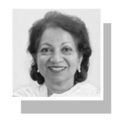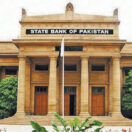By Rashid Amjad
Published in DAWN on January 04, 2021
THE consensus amongst the economic policymaking triumvirate in government — finance, planning and State Bank — that an IMF-prescribed economic stability package was the only solution to Pakistan’s economic ills and road to eventual growth has begin to show cracks. And as in previous times, it is the Planning Commission that has fired the first shot across the bow of the State Bank and the finance ministry.
At a recent meeting of the Monetary and Fiscal Policy Coordination Board, the Planning Commission purportedly argued for three vital policy changes that lie at the heart of the current economic policy stance of the government. The first to reduce further the interest rate; the second to hold the exchange rate at near its current rate (Rs160) and not allow it to be dictated by market forces alone; and the third to pursue supporting fiscal policy measures to stimulate the nascent economic recovery seen in the last few months and led by large-scale manufacturing and the construction sector.
Further, many of the participants reportedly went on to express doubt over the claims of the commerce ministry of rising exports. They presented figures that total export earnings were less in the first five months of the current financial year as compared to last year and the improvement in the current account was due to a sharp contraction in imports and an unexpected boon in remittances. The large devaluation had not yet shown the benefits expected of it, despite the upturn in December.
The State Bank avoided entering into a debate on these contentious issues by feigning to preserve its independence in deciding interest rates and exchange rate policy. Instead, it said the positive role in its accommodative monetary policy had been to reduce sharply the interest rate in a timely manner and introduce other support measures to the private sector to cushion the downturn due to Covid-19 as well as help the current economic upturn.
What path should we take? Follow IMF conditionalities or say goodbye to the Fund?
The finance ministry held back its cards on the government’s future economic policy stance (perhaps keeping in mind its present negotiations to revive the stalled IMF $6 billion support programme) though it is said to have opposed a further cut in the interest rate. However, much like the State Bank, it wanted to take its share of the credit, pointing to the fiscal stimulus provided primarily in the form of direct income support to the poorest households that had been seriously affected by loss of income and employment due to the economic downturn resulting from Covid-19.
Talk and claims aside, the time of reckoning is fast approaching and the government must deliver on its promises with less than two and a half years left in power. Political imperatives must now take the upper hand and economic policy accordingly follow suit. The prime minister expects his economic team to deliver.
But what path to take? Retain stability as the primary goal — follow IMF conditionalities and revive the stalled IMF programme? Or say goodbye to the IMF (for the umpteenth time), and on a wing and a prayer opt for reviving growth through a mixture of strong fiscal and monetary stimuli.
Those who support the ‘stability’ approach would argue that an artificially spurred economic revival (as happened in the Musharraf years) by reducing further interest rates below the inflation rate and an unaffordable fiscal stimulus through deficit financing and cheap money will be short-lived. It could also spark double-digit inflation which has only now shown signs of receding. Also, artificially holding down the exchange rate will haunt one as imports will shoot up and reserves come crumbling down. And there would be no IMF to turn to!
Yet the case for opting for stimulating growth and fuelling the nascent recovery is a very strong one. Growth will create jobs and spur new investment. Most importantly, only a broad-based economic recovery will allow economic gains to be shared with the large informal economy and small businesses. These employ the bulk of the labour force which has not benefited from the monetary easing and credit that has flowed mostly to large and medium enterprises. Also with low oil prices and global recession, fears of rising inflation and the opening up of an unsustainable current account deficit appear vastly exaggerated.
But is there an economic path which can combine growth with stability and allow us to consolidate the hard-earned gains which the government has achieved through its stabilisation measures? Yes, but it would require some accommodation in the rigid position taken by the State Bank supported by finance on interest rate and foreign-exchange management. There is indeed scope for reducing the interest rate (initially by 50 basic points) and for continuing with time-bound concessions to both manufacturing and construction till the end of 2021.
Also, an increase in public-sector expenditure in short-gestation projects as well as speeding up the implementation of CPEC-funded projects, including the setting up of industrial zones will create strong backward and forward linkages with the rest of the economy.
As to exchange-rate management, nobody would support an artificially propped-up exchange rate through foreign borrowings as the last government had foolishly done. Yet, the large devaluation should allow us to better manage the exchange rate and not allow it to be buffeted by market forces alone.
Most importantly, it is imperative for the Planning Commission to draw up a ‘balanced growth revival plan’ to cover the next two and half years and start on its implementation as soon as possible.
If there was one positive takeaway from the long-delayed recent meeting of the Monetary and Fiscal Coordination Board, it was that all participants recognised the importance of holding such meetings more frequently.
This in itself is a good start.
The writer is a professor at the Lahore School of Economics and former vice chancellor of the Pakistan Institute of Development Economics.






